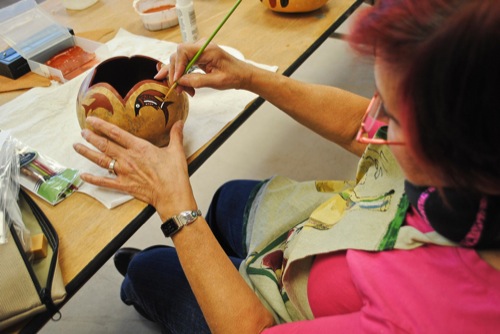
Courtesy Indian Pueblo Cultural Center
The rich heritage of America’s first peoples doesn’t exist only in museums. Travelers can experience Native American culture firsthand through personal interactions and engaging activities at a number of places around the country.
Face-to-face encounters make some of the best travel memories, and groups that spend time with Native American people can gain an understanding of their pasts and presents that goes far beyond exhibits in a museum. Time spent with Native American guides — exploring their land, visiting their traditional dwellings and learning their crafts — can help elevate an ordinary tour into a true cultural experience.
Here are a few suggestions of places where groups can have personal, hands-on interactions with Native American culture and heritage.
Indian Pueblo Cultural Center
Albuquerque, N.M.
The Indian Pueblo Cultural Center introduces visitors to the Pueblo people of the desert Southwest with a variety of museum exhibits and special programs. The center’s Pueblo Workshop Series gives visitors a chance to try their hand at traditional Pueblo arts and crafts under the direction of Native American teachers.
“These are hands-on workshops in painting, weaving, potterymaking, bread baking and basketweaving,” said cultural center spokesperson Tazbah McCullah. “They’re all taught by Native American artists.”
The regular workshop series consists of all-day or multiday events that are open to the public. Groups can arrange to have a scaled-down, private version of these workshops during their visits. These two- to three-hour experiences can include watercolor painting with a Pueblo muralist or gourd-painting lessons, among other options.
Groups that visit during the weekends can combine their workshop experience with Native American dance demonstrations, which take place twice a day.
“We bring in groups of dancers from each of the 19 pueblos in New Mexico,” McCullah said. “They’re established dance groups that have a lineage of many generations. Some groups let visitors join them in part of the dance.”
Navajo Village Heritage Center
Page, Ariz.
Bonnie Brown and her husband established the Navajo Village Heritage Center to help preserve the cultural history of the Navajo people, which they felt was being lost on the reservations. Even though the center originated to reach Navajo natives, the staff now offers interpretive programs for travelers as well.
“We have an evening program that teaches guests about weaving, which is a significant part of Navajo culture,” Brown said. “They learn about how family life was in the traditional dwellings. And we have a dance program where adolescents demonstrate the traditional powwow dances.”
The programs take place in the center’s reproductions of Navajo dwellings, called hogans. Visitors learn about the importance of textiles in Navajo culture and can watch artisans weave on a loom or even try their own hand at the art form.
They also learn about traditional family roles in the hogans and get introductory lessons in the native Navajo language.
www.navajovillage.com
Cherokee Old Settler Tour
The tour begins during a time before the Cherokee Removal, or the Trail of Tears, when a group of Cherokees willingly relocated to Arkansas beginning in 1808 and then to Indian Territory in 1828. This group was called the Western Cherokees, or Old Settlers.
To learn more about their history, visit:
Sequoyah’s Cabin State Park — Sequoyah built the log cabin, preserved on its original site, in 1829 and lived there until his death.
Tahlonteeskee — Chief Tahlonteeskee presided over the Cherokee Nation from 1809 to 1818; it considered to be the oldest government capital in Oklahoma.
Dwight Mission — Dwight Mission was the site of an early printing press as well as a stopover point for many missionaries to the Cherokee; it served as a school and provided education opportunities for Cherokee children.
Fort Gibson Historic Site — The fort was established in 1824 to protect the western border of the United States and maintain peace between the warring Cherokee and Osage.











